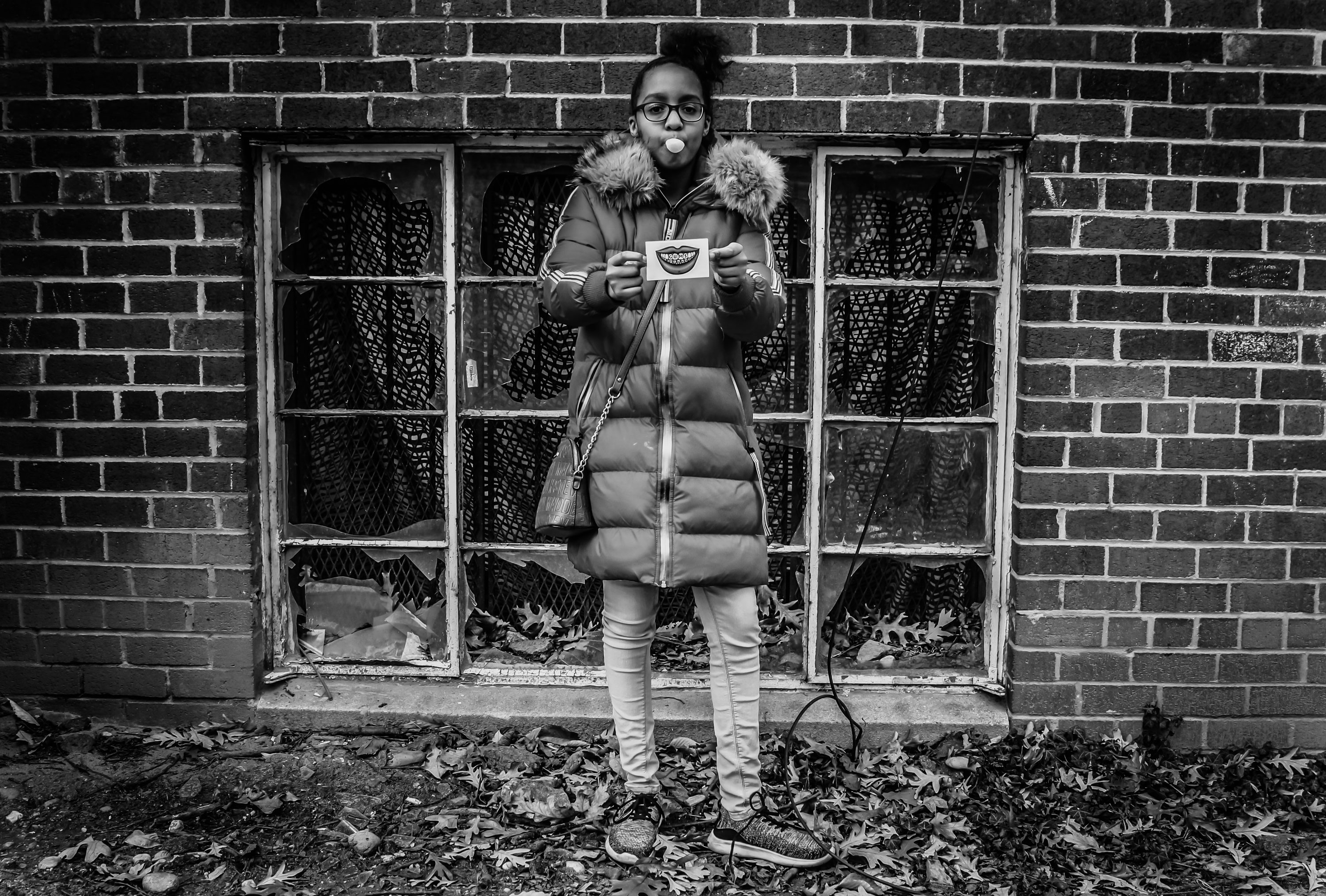
- Interview by Hugh Weber March 10, 2020
- Photography by Dee Dwyer
Zykera Tucker
- designer
- poet
Zykera Tucker is a multi-faceted creative in southeast Washington, DC whose work is fueled by a desire to challenge the spectres of gun violence and designed disconnection within her community. Zykera’s creations, including her flagship gum line called “Gums not Guns,” inspire neighbors and community members to stick around, stay connected, and create solutions to the challenges that fuel their discontent.
When I have these conversations, whether they’re with fancy designers like you or ordinary people elsewhere, I get nervous because I want to ask the right questions and tell your story the best possible way. But you’re not nervous. I can tell—
I am.
You’re a little nervous?
Yeah.
That’s ok. I’m nervous too. Why don’t we start by talking about where you’re from?
Can you tell me a little about growing up in southeast DC? How would you describe it to others?
The place that I grew up in is normal for me, but people who are just moving into the area are like, “This is a bad place.” People underrate our neighborhood. If one person does something bad, they act like it’s the whole community’s fault when it’s really not. And the people that are in the community are scared of it too. They aren’t like, “Let me join you and your crew.” No. They’re like, “I gotta stay in the house today because I heard gunshots last night and the police were here, so I don’t think this is gonna’ be a good day.” So they just stay in the house.
Tell me some of the things that you know are good about this place—the sounds and sights and things that you think about.
That peaceful hour when you get home and the sun’s still out. I like it because it’s so peaceful. You can get on your phone, read a book, play with your siblings, or do a puzzle or something relaxing because it’s that hour to relax after you get home.
And then I like the people—well most of the people—in my community, and how the houses are beside each other. If you want to go to your friend’s house, your grandma doesn’t have to be that worried because they’re right beside you. They’ll be like, “Call me when you get there.” Then, two seconds later… “I’m here now.”
How do you think you’ve been influenced by growing up here?
The people inspire me.
People need inspiration. I want to be the person to give them inspiration so there can be a lot of people creating stuff instead of sitting around like, “That’s too hard,” or “I’m too young.” They should be like, “I’m just gonna go at it,” and “It don’t matter if I make it or not,” and “If I don’t make it then I’m going to try again.”
I want to give them that.
“Because it doesn’t matter where you come from. It doesn’t matter where you are. No matter how old you are, that shouldn’t stop you at all because if that stops you then you’re probably not going to make it. If you let simple things like that block you from your dream, then it’s not going to work.”
That’s a really special perspective to have in general. Are there people around you that have influenced you to see the world that way—to see yourself as an inspiration for creativity?
Yes. My brother, Zakari.
He made a poem that ended up in a book, and the book went online. People started buying it. I was like, “If he can do it, then I can do it.” He was the same age as I am now when he published the poem. If he could do it at a young age, then I could find a way to inspire others to create too.
It’s amazing when someone inspires you and then you take on some of that responsibility to inspire other people. Are there other people that have inspired you?
My cousin. He does music. Even though I can’t go to his concerts—because they’re for grown-ups—I still listen to his music, and I like it.
He inspired me, and I wanted to be like him. I wanted to make stuff that goes worldwide. One day I was like, “OK, I’m going to do this and I’m not going to stop.” So, now I’m here.
Also there’s my mother. Even though she’s not with us—well, even though she’s not home—every time she sends us mail, it comes with a certificate that she has read a lot of books or something like that. She inspires me to remember that even if you’re going through something right now, you keep going.
That resilience sounds like a family trait—a family legacy.
I’ll read this next question as it is because it will make me laugh. I don’t know if it’ll make you laugh, but here it goes… When you were a kid—
I am a kid.
When you were younger [laughing], what were some of the things you used to do? What are some of the things beyond the focused, creative work that you’ve done?
Eating [laughing].
Well, I don’t really know, but people keep telling me that they remember when I stuck a fork in the socket … [laughing].
That’s a good example. Anything else?
I’m in step and basketball.
Step is good because it’s kind of like dancing, and I like dancing, so I like that one better than basketball. If I could choose one for the whole week, I would choose that one. For me, it’s about creating with my friends and being able to show everybody what we created and how it works. It’s about showing other people that they can too.
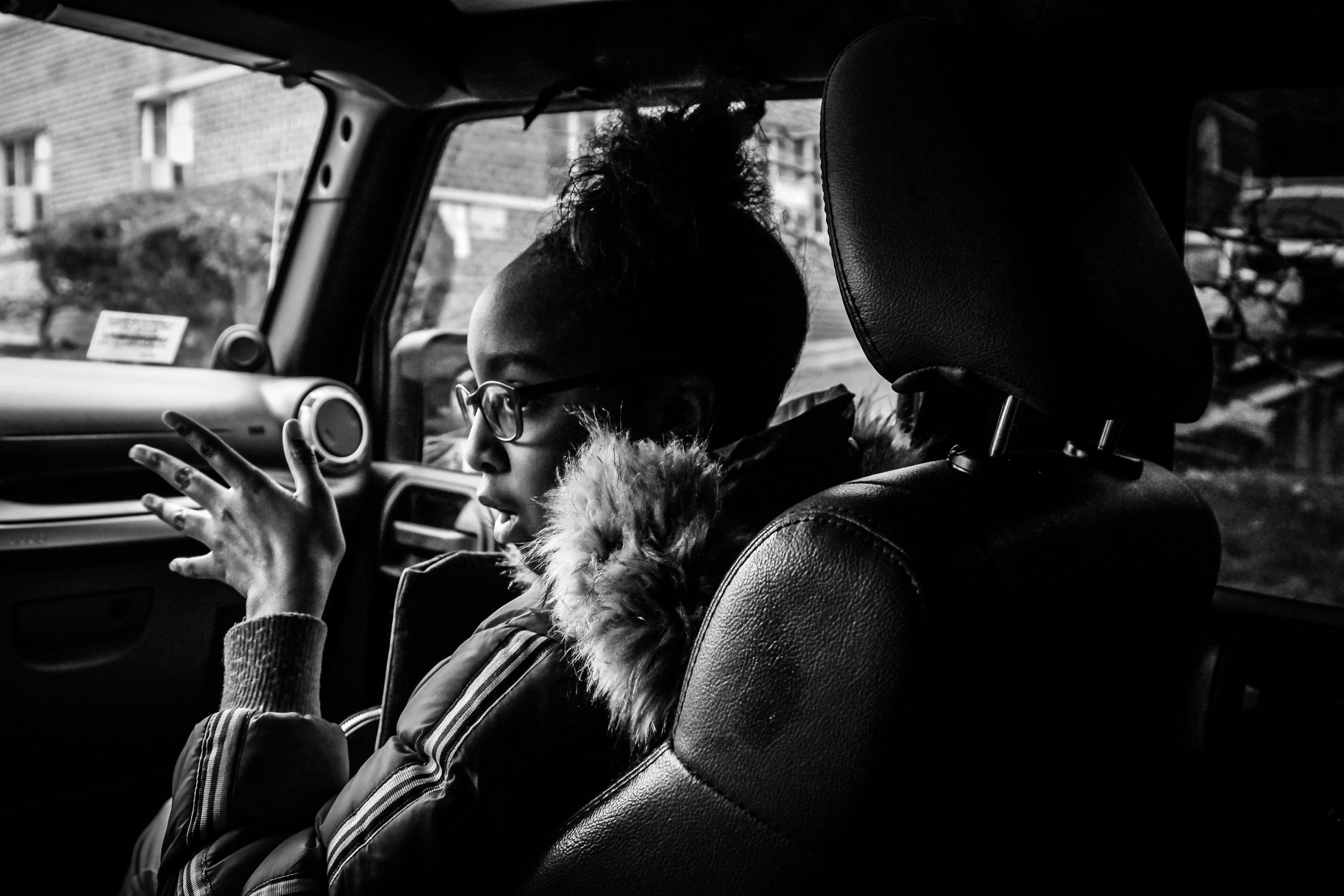
“People say, ‘I can’t do this no more. It’s just not going to work.’ People stop what they’re doing, while other people continue and they succeed. Everybody is able to, but not everybody tries.”
Inspiration can come from anywhere—from step class with your friends to the clothes you wear, to the TV and movies you watch to the music you listen to. Where do you find inspiration?
So what I do is I listen to some calming music or some hype music and sit down—
Those are two very different things. Do you have favorites? Things to calm you, things to hype you up?
There are days where I have a mood for different types of music. I sit down, put my earphones in, block out all the sound, and write something, or read a book, or even lay down and get comfortable, and I just wait. When I do that, I don’t hear the music really, I’m just thinking—well I can hear it because it’s loud, but I don’t listen to it because I’m trying to feel the beat. It makes ideas come to my head and brings me inspiration.
When that idea shows up, does it come in parts, or does it come all together in one big lump? How would you describe the way ideas come into your head?
When ideas first come to me, they’re just a couple words. I have to be like, “What does that mean?” and “What does it have to do with what I’m trying to think about?” And then it comes to me while I’m trying to piece it together.
I know you wrote a couple haikus on your drive here. Did the creative process work the same way? You weren’t in your room with your earphones on—you were in the car with your aunt and strangers. Did it work the same way when you were sitting there kind of piecing things together?
It was like that a little, but more it was like, “Come on, hurry up, pop into my head.” But I wasn’t just waiting for it to come.
So can you tell me about the kind of feeling you have when you know you want to do something creative? Is there something that sparks that? Is there a particular type of mood or type of day?
When I feel creative I get playful, like I want to play with my brother and sister. I can’t sit still when I think of something.
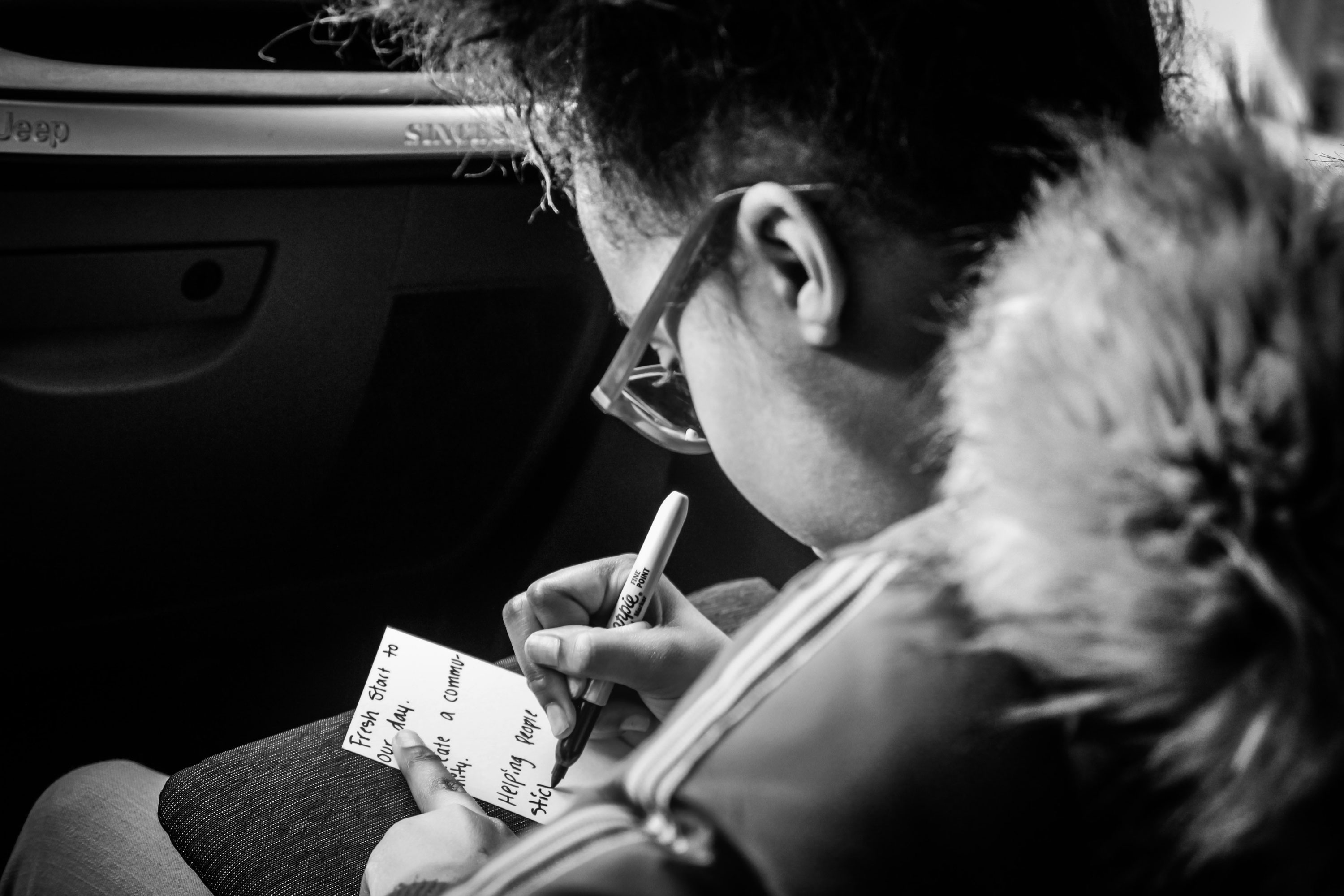
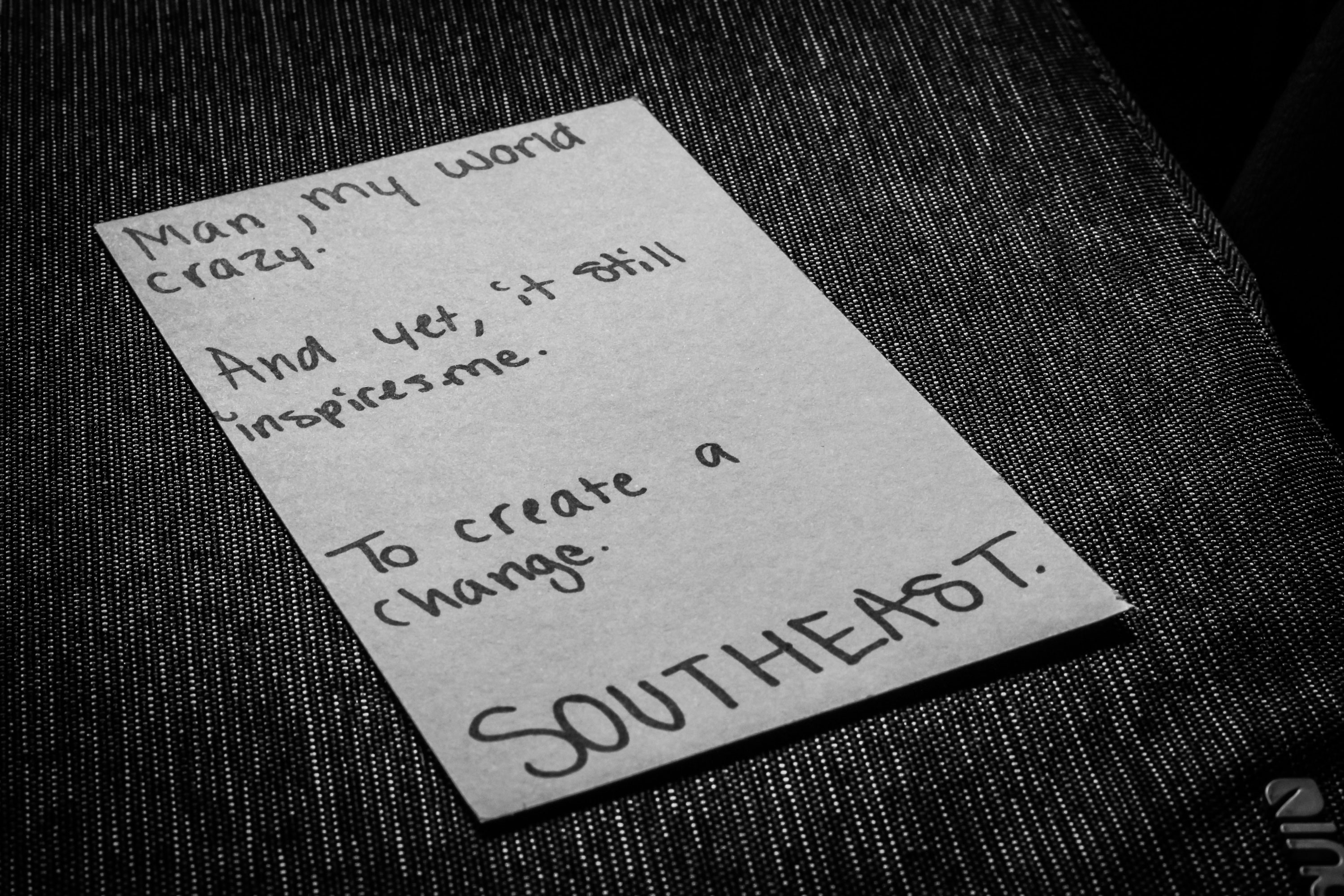
Let’s talk about the first haiku that you wrote, which is about place. Can you share it with us?
“Southeast”
Man, my world crazy.
And yet, it still inspires me.
To create a change.
I’m a dad and I’m an emotional guy so you’ll just have to give me a second [wiping eyes and laughing]. That’s a pretty clutch place to start. Holy cow. Tell me a little bit about what that means to you.
It means that even though it is crazy around here and it’s like that, it still inspires me to make a change and make the world better as much as I can.
Do you feel limited in a way by your age or by living here in southeast DC?
Nope.
Because it doesn’t matter where you come from. It doesn’t matter where you are. No matter how old you are, that shouldn’t stop you at all because if that stops you then you’re probably not going to make it. If you let simple things like that block you from your dream, then it’s not going to work.
You said that you want to be inspiring people to create like you have and to create change like you have. If people are starting to feel a little bit frustrated or a little bit challenged by it, what advice would you give to them?
Calm down. Just take a deep breath. Put your earbuds on and listen to your favorite song. Get comfortable. And then whatever you’re frustrated about, just write down why you’re frustrated and what you think you could do to help it. Before you know it you’re just going to be like, “Oh, that helped, and I didn’t know that just calming down and taking a second would help me.”
Are there specific artists, musicians, or creatives that you look up to or you enjoy the most?
I listen to Cardi B, Megan Thee Stallion, Migos, and Drake a lot.
Tell me, is there anything specific about those musicians, and frankly, poets that stand out to you?
Yes, because even though a lot of people hate on them, they still do what they want to do and they don’t let those people take control of their life. They are just themselves.
Are there people that you think like, “I’d like to grow up to be like that?”
… [silently pointing around the room] … Everybody in the room.1
What is it like to have teachers and people in the community that are encouraging and creating spaces for creativity?
They inspire me a lot because they don’t stop, no matter what. If something happens, they’re like, “OK, now let’s create something else to make sure that doesn’t happen again.” Nothing will stop them.
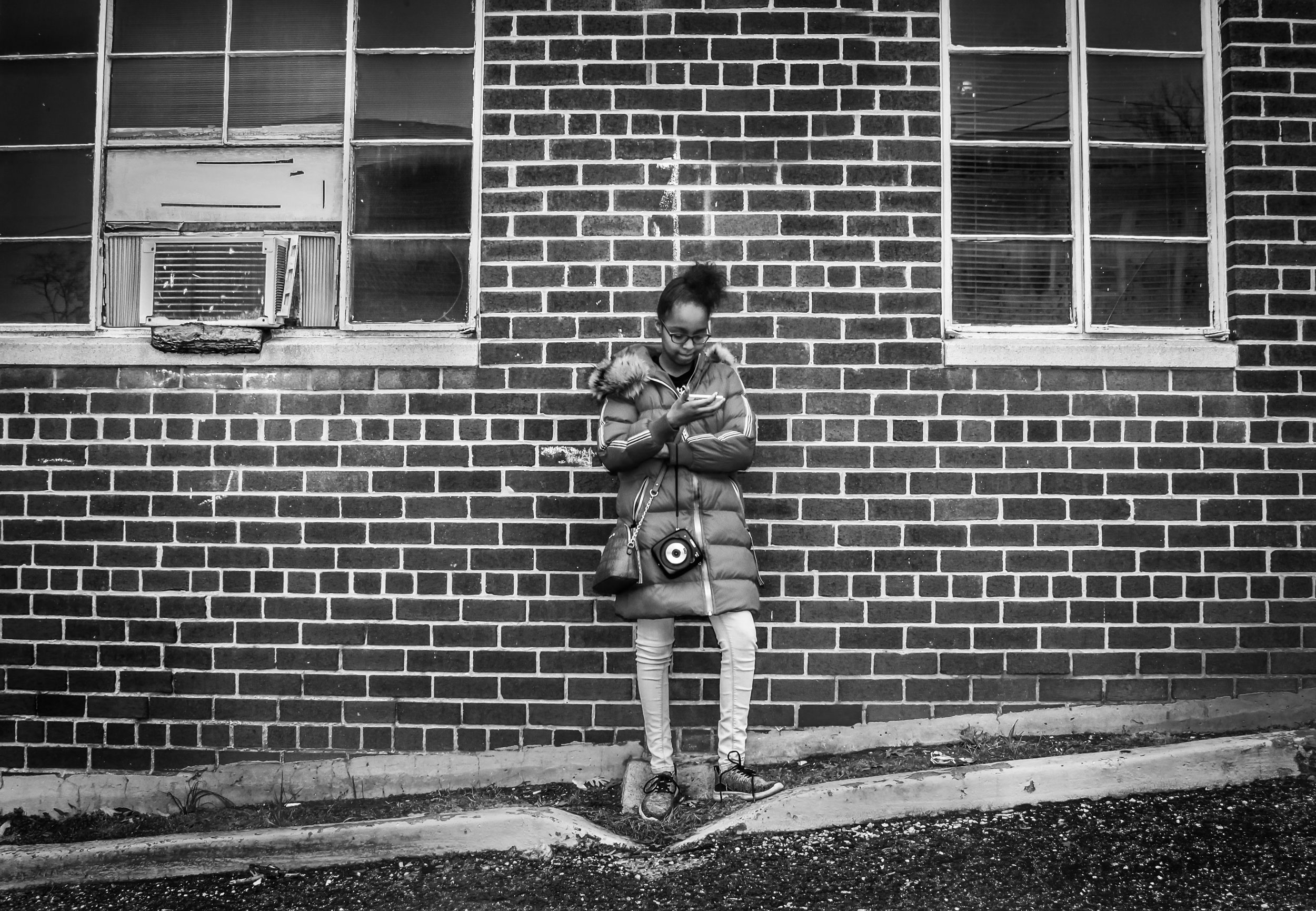
In the winter of 2019, Zykera became one of the founding members of a design collective called The Bridge, a “joyful, courageous, and creative community of young people who design against the legacies of systemic oppression.” The Bridge was launched by The Creative School (TCS), an organization in Southeast DC that connects students and creatives in order to design personal and communal well being. Over the course of six months, 35 fifth through twelfth grade designers worked alongside Zykera to design responses to gun violence in their community. Zykera’s gum line was one of the more popular models to emerge from that design community. Her gum was showcased at a community reunion just days before 19 people were shot in the span of a week, including her 11-year old classmate, who was shot to death steps from her school while selling bottles of water.
What do you want to talk about next?
My second haiku.
“Gums not Guns”
Fresh start to our day.
Create a community.
Helping people stick.
Amazing. So tell me more about “Gums Not Guns”. What is it?
It’s gum to help people get their minds off of shooting and violence—to talk when they are walking around with people about things like, “Did you hear about this new gum?” and to get them talking and building a bigger and stronger community.
What do you remember about the moment when you came up with the idea of the gum?
Neveah and I were talking about the world and how we could change it.
People were telling us they didn’t feel safe [in southeast DC] and that they were thinking about moving. That made us think, “How can we get them to realize that moving’s not going to make things better?” Our community breaks apart when we move.
You mention the community a lot. Why is community so important to you?
A strong community is the best community because everybody knows each other. They don’t want to hurt each other. And if you ever had beef before, they’re like, “There’s no point in this now. Let’s squash this.” And then they become friends. It’s just like a nice place where people wake up in the morning and are like, “Hey, you want to walk to school?” instead of being like, “That person scares me, so I don’t walk to school no more.”
“The people that were getting shot were people’s family and I didn’t want to feel like that. I didn’t want one of my family members to be next, so I was like, ‘Let’s find out a way to stop this,’ and I joined The Bridge.”
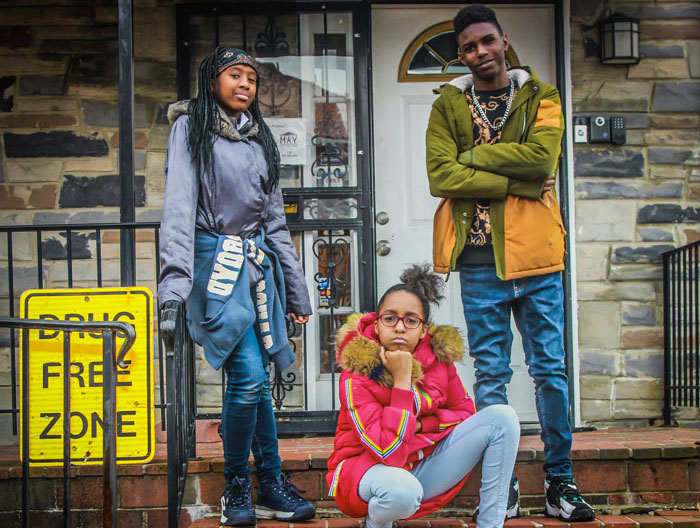
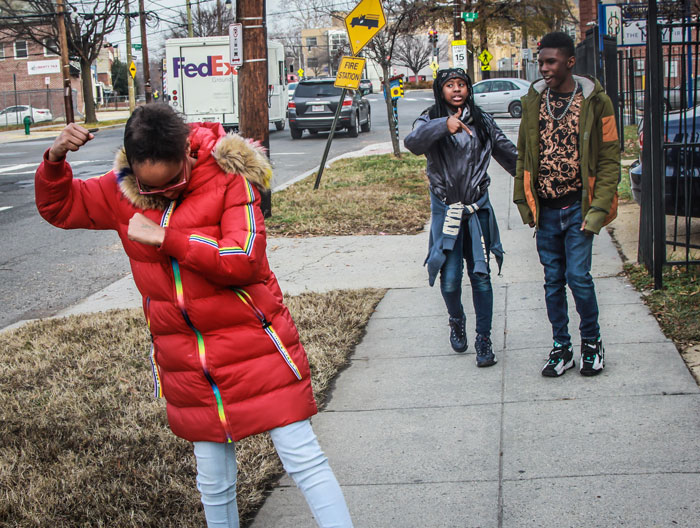
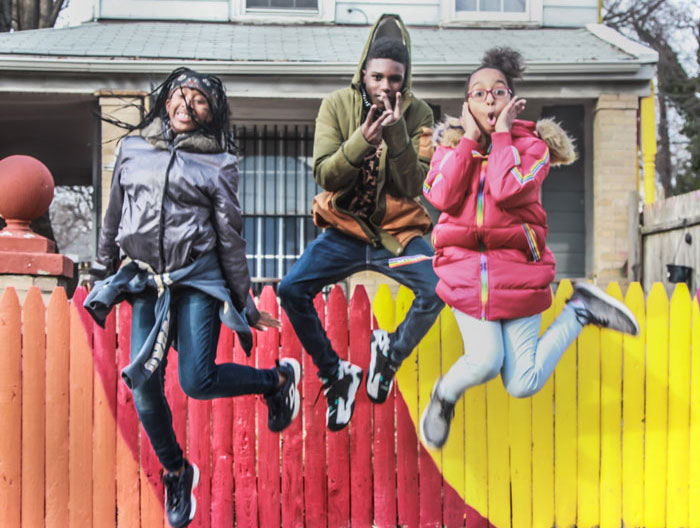
And, is that why you got involved in The Bridge?
[I started because] my friend was like, “Let’s do this,” and because it sounded fun, but also because gun violence was happening too often. It was getting irritating. The people that were getting shot were people’s family and I didn’t want to feel like that. I didn’t want one of my family members to be next, so I was like, “Let’s find out a way to stop this,” and I joined The Bridge.
What was The Bridge? Who was involved? How did it work?
OK, so we got together every Wednesday and sometimes Fridays if it was like a big project. Ms. Gabby was involved, Mr. P was involved, and a lot of people, Neveah, Thomas, Ms. Jones, sometimes Ms. Haynes, and SPN, and people from the church sometimes would come. We would design projects that would be based on one subject, but it was mostly about gun violence. There was this big community reunion that we designed. A lot of people came for free. They were handing out my gum and there were different types of stations and stuff.
Talk to me about the gum specifically. It could have been Skittles, or it could have been something else. Why did gum emerge?
It lets people know that they have other things to do instead of shooting. It’s just one thing to remind them like, “Oh, okay, violence is not my only thing.” The gum can remind them, but other people’s designs could help remind them too. It could be anything—like a ball that reminds them, like, “Let’s go make friends with somebody.” It’s about letting people know there is other stuff to do instead of shooting or hurting people.
And then chewing gum can let them remember to relax and have new ideas. They’ll be like, “What else can I do today? I don’t want to do that anymore. What if that was my family member? I know how I would react. So why would I do that to somebody else’s family member?”
Yeah, that makes sense. It’s less about the gum and more about taking a moment to pause and think.
You talked about how you heard people say that they want to move away from the neighborhood, but you want to make people actually deal with it.
Yeah, people were saying things like, “I want to move away from all of this…” And that made me think they were just hurting themselves because when they moved away they wouldn’t have anybody to talk to. They wouldn’t have any friends over there.
And so you would rather people take the time to think about how to make this place better than try to—
Get away from it. You can’t run away from your problems.
I mean if you really want to move, and you’ve thought about it for like years and years, then it would be okay, especially if you’ve got people over there. But most people just move without thinking about it. They just think, “I just want to move out of this place.”
Since you’ve created this, where’s your mind gone?
OK, so I have one gum idea that’s called “Smile Don’t Shoot.” It’s going to be a spearmint flavor. And there’s another one we’re thinking about for the homeless, but we don’t know what to call it yet.
It feels like you’re constantly creating. It feels like you’re a designer. It feels like you’re a poet. Some people would take a month to write a poem like those first two poems that you knocked out in about 15 minutes. That’s a big deal.
Do you think of yourself as a creative?
Yes. But people need to know that it’s not hard. You don’t have to spend every second of your day creating. You can have a different life too, but you can’t just be like, “I will do that later, and create later, and then create later…” You can’t do that, but you can have another life. It doesn’t have to be just like, “I’m going to create this, and then I have to create that, and then that…”
It can be like, “I’m going to go out. Then I am going to create that tomorrow, and then maybe I can go out and create again.”
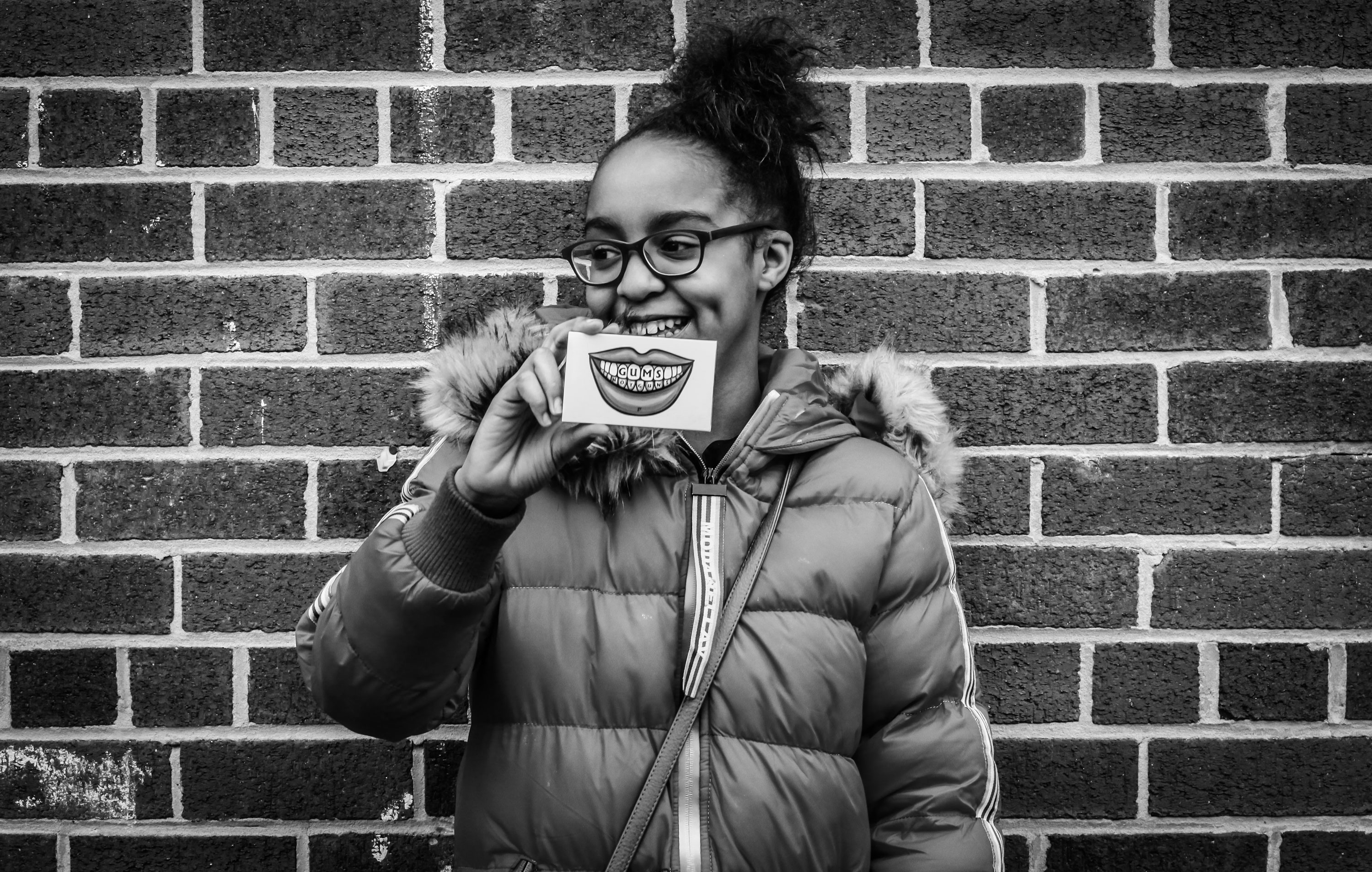
What does being a creative mean to you?
It means you don’t just think about you and how things like [your work] can benefit you or how whatever you create can benefit you. It’s not just thinking about things like, “If I make this, all I want is the money. I don’t care about the people.” No, you can’t do that. You have to think about how it will make the people feel. If you say that, then you might not get money because it’s based on what you think, and if people don’t like it then you’re not going to get money and the idea is not going to work out. You have to think about the community and what they would think or say about it—if they will buy it or not. You have to think about the people around you. You can’t be selfish.
Ok, this is my last question so I’ve got to make it count. This website, this magazine, this whole thing we’re doing is called The Great Discontent. So, how do you solve for the great discontent?
People say, “I can’t do this no more. It’s just not going to work.” People stop what they’re doing, while other people continue and they succeed. Everybody is able to, but not everybody tries.
So I want people to say, “She was eleven when she started her [work], and she never gave up.” Maybe they’d be like, “OK, then, I’m going to continue through my discontent. I’m going to continue that.”
I want to inspire somebody. I want them to say, “I want to go ahead with this. Just go ahead.”
I said it twice [giggling].